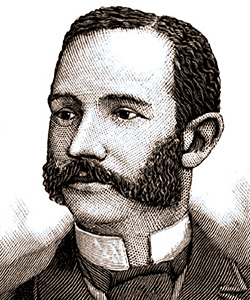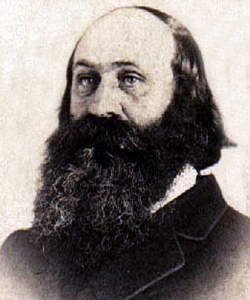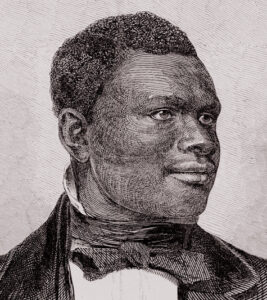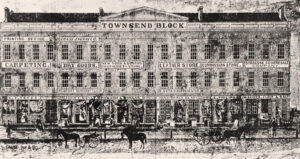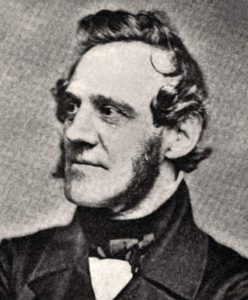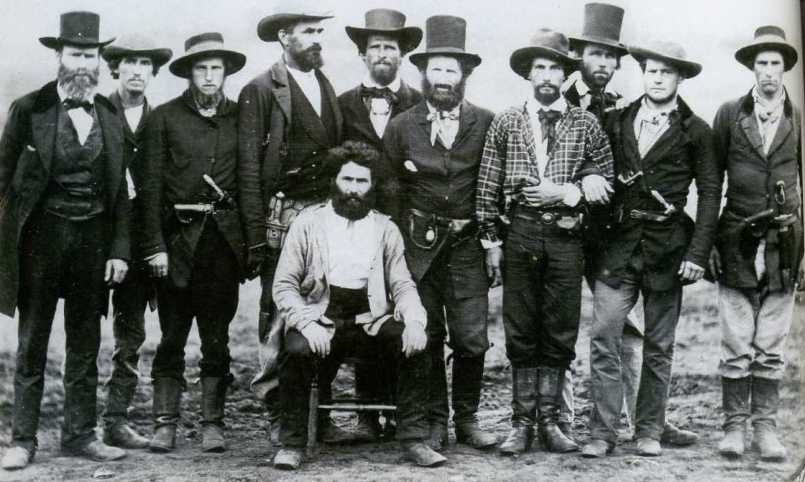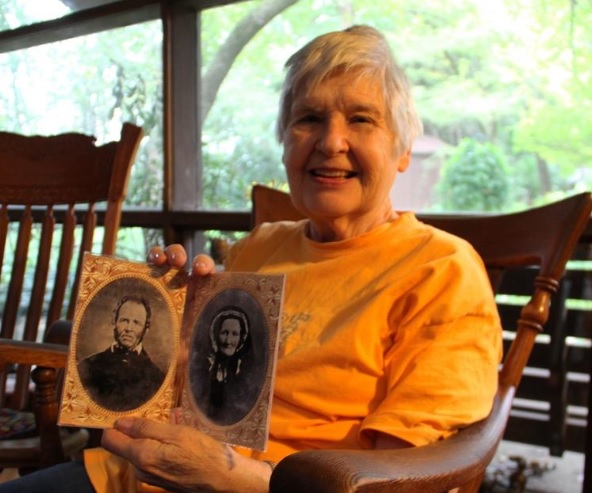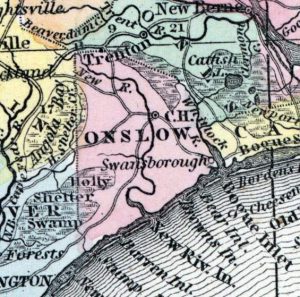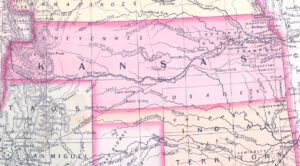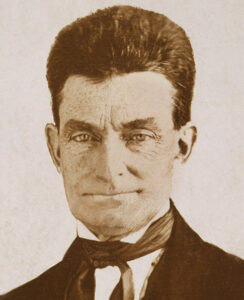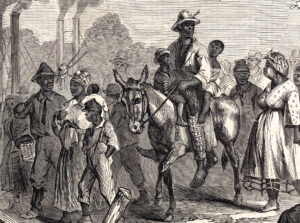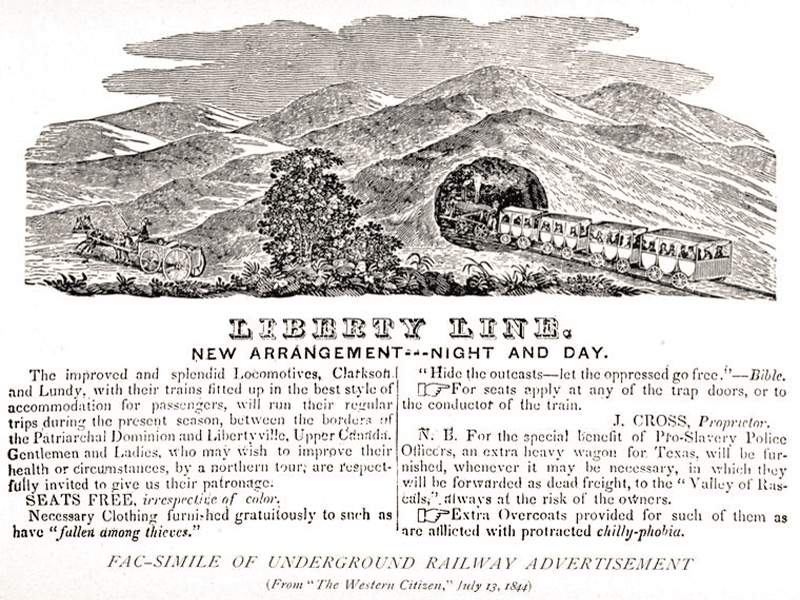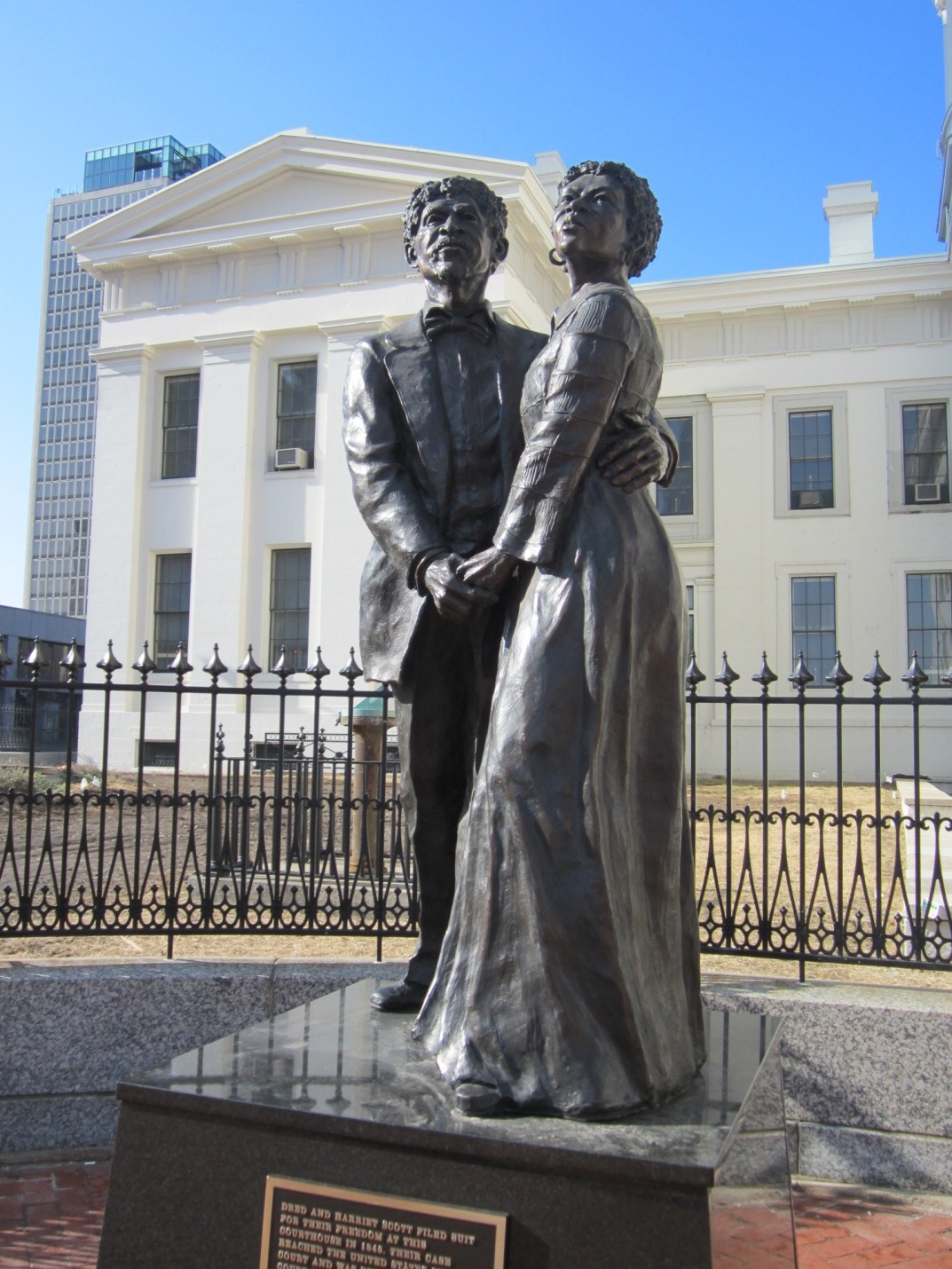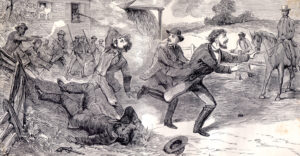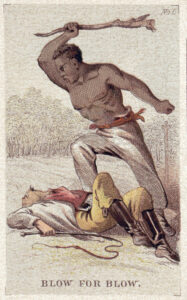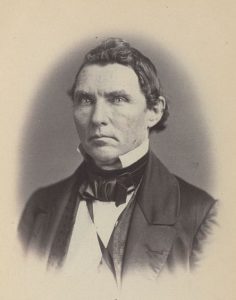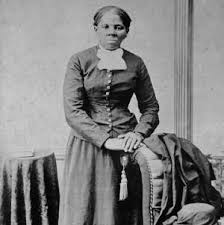This post will be updated occasionally.
From Glenn David Brasher, The Peninsula Campaign and the Necessity of Emancipation (2012):
“As a result, some blacks made their way down the Peninsula to the sheltering arms of Dunmore’s forces. Talk of a Negro “stampede” led to increased patrols and other measures to prevent a mass exodus of slaves. Masters told their slaves that the British were no friends of the black man and would only sell them to the West Indies, where they would endure much harsher conditions. Nevertheless, despite the increased vigilance of whites, within a week of the proclamation approximately 300 blacks had evaded the patrols and made it behind British lines.” (11)
“An indescribable panic ensued among the colored population,” the National Anti-Slavery Standard reported as Butler’s men abandoned Hampton. “The streets swarmed with the terrified people.” The Baltimore American correspondent explained that “a stampede of the colored population took place…. Nearly a thousand contraband men, women, and children, must have come in during the last twenty-four hours.” (p. 58)
NOTE: Brasher’s source for above reference was Baltimore American and Commercial Advertiser, July 29, 1861; he also included the 1861 image from Harpers captioned “Stampede of Slaves,” (August 8, 1861).
From Eric Foner, The Fiery Trial (2010):
“As the war progressed and the Union army occupied larger and larger portions of the South, the trickle of runaways became a flood. ‘Slave labor is disappearing so rapidly,’ a member of Maryland’s legislature complained early in 1862, ‘that our lands must go untilled.’ As the navy patrolled the southern coast to enforce the blockade, slaves came to the shore hoping to escape to their ships. Some succeeded in doing so. When a small Union flotilla sailed up the Stono River in South Carolina in May 1862, the crew observed cavalry pursuing a ‘stampede of slaves’ fleeing to avoid relocation inland. After opening fire on the Confederate forces and dispersing them, the naval commander took more than seventy slaves on board.” (p. 167)
From William W. Freehling, The Road to Disunion: Volume II (2007):
“As usual in exposed border areas, fugitive slaves lit the first spark. Especially in Dorchester County, whites experienced the most provocative border scenario: an ongoing series of gang runaways, allegedly provoked by a northern Liberty Line that extended inside the South. On the Eastern Shore, freedom’s agitators supposedly included free blacks, who taught by their very presence that liberty need not be reserved for whites, and white strangers, who helped slaves flee toward liberty. The Baltimore Sun reported two results of Dorchester County’s blur of slavery and freedom:
October 31, 1857. “A Grand Stampede” of Dorchester slaves. 30 escaped, making 44 in two weeks, 15 belonging to one robbed capitalist. He offers a $3100 reward.
July 31, 1858. “SLAVE STAMPEDE –There was another slave stampede in Dorchester County, Md. last week.” Seven slaves worth $10,000+ absconded.
Such stampedes could impel owners to sell more slaves to safer Lower South areas. With more slaves fleeing north, more owners selling slaves south, and more masters offering future freedom to keep slaves toiling, slaveowning capitalism looked to be spinning out of control –and out of Maryland.” (pp. 194-195)
From Brian Gabrial, The Press and Slavery in America (2016):
“Because the initial stories about the raid magnified the crisis and slave participation, they would be sure to raise alarm among the white population. The early headlines used words such as “Riot,” “Insurrection,” “Stampede of Slaves,” and even “Negro Insurrection” to catch the readers’ attention. The October 17, 1859, Charleston Courier headline, for example, read “Insurrection in Virginia,” and an October 18 New Orleans Daily Picayune said, “Riot at Harper’s Ferry.” In Richmond an October 18 Enquirer headline announced “A Desperate Riot at Harper’s Ferry.” A National Intelligencer headline similarly was “Serious Disturbance at Harper’s Ferry.” In New York readers of the October 18 New York Times learned of “Servile Insurrection” with a “General Stampede of Slaves.” The next day the New York Times referred to Harper’s Ferry as “The Negro Insurrection.” (pp. 206n-207n)
NOTE: Gabrial also cites: “Brown’s Slave Stampede,” New York Evening Post, October 19, 1859.
From Kate Clifford Larson, Bound for the Promised Land (2004):
Chapter 7 is entitled, “Stampede of Slaves” (p. 130)
“Despite a harsh crackdown on the personal liberties of free and enslaved blacks, and even nonslaveholding whites, slaves in Dorchester County continued to run away in unprecedented numbers. Soon national newspapers were running articles mocking Eastern Shore slaveowners, reporting that the “stampedes of slaves” from the area certainly didn’t support [US congressman James] Stewart’s view of their happiness.” (p. 149)
“For Eastern Shore whites, the drama of a “stampede of slaves” out of Dorchester County, as local and national newspapers were wont to describe it during the 1850s, was surpassed only by the Civil War itself.” (p. 151)
NOTE: Sources include: “Negro Stampede,” Elkton, MD Cecil Whig, October 31, 1857; “Slave Laws of Maryland,” Washington, DC National Era, March 24, 1859; “Political Intelligence,” Washington, DC National Era, June 30, 1859.
From Kristen T. Oertel, Harriet Tubman (2016):
“Slaveholders on the Eastern Shore sounded the alarm after twenty-eight slaves escaped in just one night from multiple plantations, including fifteen slaves from Samuel Pattison’s estate. One Maryland paper referred to the escapes as a ‘Negro Stampede,’ and local slave catchers mobilized to try and stop the exodus. They blamed local free blacks for the problem, linking them to ‘”negro worshippers” of the North,’ and anyone in the region who was suspected of harboring runaways risked vigilante justice, like tarring and feathering, and even lynching. But nothing seemed to stop the stream of runaways, so that by 1859, the national press reported that ‘stampedes of slaves’ had fled the Eastern Shore.” (p. 47)
NOTE: Primary source quotations come from Kate Clifford Larson’s Tubman biography, Bound for the Promised Land (2004)
From Joseph P. Reidy, Illusions of Emancipation (2019):
“On July 25, Butler abruptly ordered the evacuation of Hampton. Following the federal debacle at Bull Run four days earlier, the War Department had requisitioned 4,000 of Butler’s men to help protect the capital, leaving him little choice but to pull back from Hampton. The departure of the soldiers prompted “a stampede of the colored population,” in the words of a correspondent for the New York Herald. The fear of a Confederate attack and the return to slavery “lent wings to the contrabands,” who grabbed what clothing, household furniture, and effects they could gather and set out over the “long and lonely road” to the wooden bridge that crossed Mill Creek to Old Point Comfort and the fort, their envisioned “haven.” “Never was such an exodus seen before in this country,” the reporter noted.” (p. 172)
NOTE: Source was “Important from Fortress Monroe,” NewYork Herald, July 29, 1861, 1.
From Craig L. Symonds, Lincoln and His Admirals (2008):
“John B. Marchand ventured up the Stono River, ten miles south of Charleston. After steaming upriver for half a dozen miles in the Unadilla (the first of the ninety-day gunboats that Welles had authorized the year before), Marchand was returning toward the open sea when the sound of screams from the riverbank drew the attention of every man on board. Marchand saw “a stampede of slaves on the cotton and corn fields to the south of the river.” (p. 159)
NOTE: Symond’s primary source was John B. Marchand, Charleston Blockade: The Journals of John B. Marchand, U.S. Navy, 1861-1862 (entry of May 21, 1862), edited by Craig L. Symonds (Newport: Naval War College Press, 1976), 176-77.
From Amy Murrell Taylor, Embattled Freedom (2019):
“Hundreds of other refugees from Newport News, as well as from the recently evacuated town of Hampton, came to the same realization. And with that began a new exodus to the fort that was quickly dubbed a ‘stampede’ by an artist for Harper’s Weekly (fig. 2). In an illustration in the journal’s August 17 issue, men, women, and children can be seen running –literally– in the direction of the fort, clutching baskets of food and sacks of possessions. The image conveys the urgency of their relocation to Fort Monroe, as well as the large numbers involved: a reported 2,000 arrived at the fort during this late July, early-August migration.” (p. 31)

